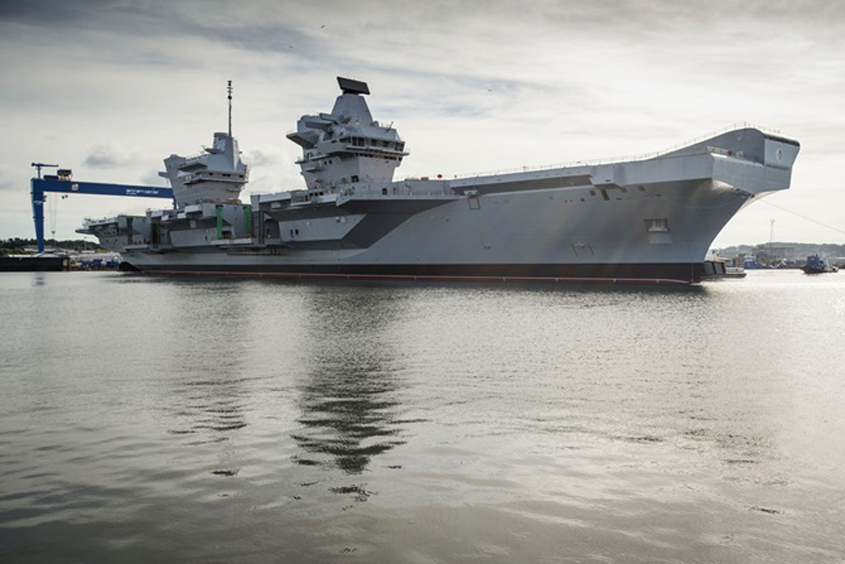Admiral Sir Philip Jones, First Sea Lord of the British Navy, was in India on special invitation by the Indian Navy to attend the decommissioning of INS Viraat, the world’s longest serving warship. INS Viraat, which was recommissioned in the Indian Navy in 1987, had served in the British Royal Navy for 27 long years before being acquired by India. In her previous avatar as HMS Hermes, she had played an instrumental role during the 1982 Falklands War. In an exclusive conversation with The Sunday Guardian, Sir Philip recollected his memories about HMS Hermes, about his association with her as a young sailor, and about what India could do to preserve the heritage ship. He also talked about the deep naval association between India and Britain.
“I very much see this association between the two countries continuing. We are going to come back here for Exercise Konkan 17 (bilateral naval exercise between India and Britain). We will come back here in 2018 too. Both of us are building aircraft carriers at present, and we are to extend co-operation to each other in doing so. I see a bright future for the two of us,” Sir Philip told The Sunday Guardian.
He said he was particularly honoured and grateful for being invited for the decommissioning ceremony of INS Viraat. “So much attention has been given by the Indian Navy to Hermes. We feel really honoured to be here and to witness this. I am grateful to the Indian Navy for inviting us,” he said.
The construction of HMS Hermes began in 1944 during the Second World War. She was commissioned in the British Royal Navy in 1959. She retired from her service in 1984. But before the British Navy decommissioned her, Indian Navy brought her. She was mothballed when the Indian Navy acquired her. She was recommissioned in Indian Navy in 1987 as INS Viraat. Since then, she served Indian Navy till 6 March 2017, when she was decommissioned in the presence of almost 2,000 Naval personnel. INS Viraat holds the world record for being the longest serving warship.
Asked about his association with Hermes, Admiral Sir Philip Jones said that two incidents stood out in his mind. “In 1982, Hermes was the flagship vessel during the Falklands War. I was on-board the assault ship HMS Fearless. There is a strong sense of affinity among all the veterans who have served in the Falklands War. At that time, HMS Hermes provided vital support and cover to our other ships,” he said.
“Later, I was the navigator of a war navy vessel. I was stationed on-board a Plymouth-based frigate. I remember when I was on-board that frigate, HMS Hermes was going to India. It was a great moment to see her. We hoped she had a great life ahead,” he said.
Asked what future he wished for such a heritage ship, he said, “Maintaining a warship of this size is always a difficult proposition. World-over, people have come ahead to preserve such a heritage. If it can be done viably, it will be good.”
Asked about Britain’s past experience after the decommissioning of her huge warships, he said, “Warships are difficult and expensive to maintain as museums. We had decommissioned three Invincible Class carriers in the recent past. One was decommissioned in 2005, other in 2010, and the third one in 2014. Many people came ahead. They thought that such illustrious ships must be preserved. There was a huge campaign in our country. But ultimately, no one could come up with a viable plan, enough money and confidence. We also could not convince the environmentalists that the ships can be preserved without causing environmental damage. Ultimately, maintaining a ship takes a lot of money and hard work. She has to be dry-docked regularly. Till now, I have seen such huge warships being preserved in the US and China. Three have been preserved in the US, and one in China. They have been turned into a museum.”

